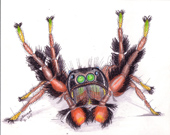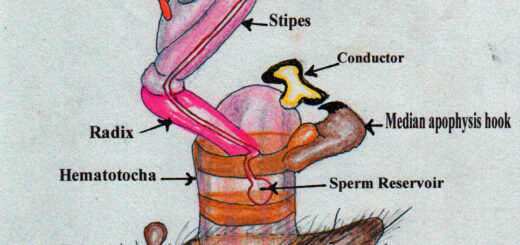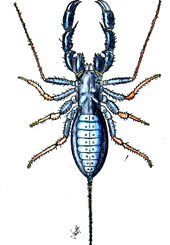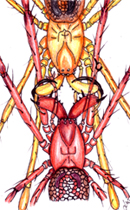Spiders. – Part 6. The Egg Sac.

Recall, from Part 3., the male gametes are stored within the spermathecae of the females’ abdomen.
The female’s unfertilized eggs start their journey through life by being mixed with the male gametes. Then, one by one they are squeezed through her genital opening and cemented together by a viscous fluid. The fertilized eggs are then quickly wrapped up in silk.

For this post, we are using the Cat Spider Araneus gemmoides as an example.
This is a large Orb-web spider that you may be familiar with. It can often be found in its magnificent web stretched across the outside of your kitchen window.
Moths and various flying insects are attracted by the kitchen light, creating a good food supply for the spider.

The Egg Sac.
Another name for the egg sac is the Cocoon. In the case of the Cat Spider, it is a wonder of construction built-up from four layers of silk. Inside this silken cocoon, the eggs are laid thereby providing protection, warmth, and humidity.
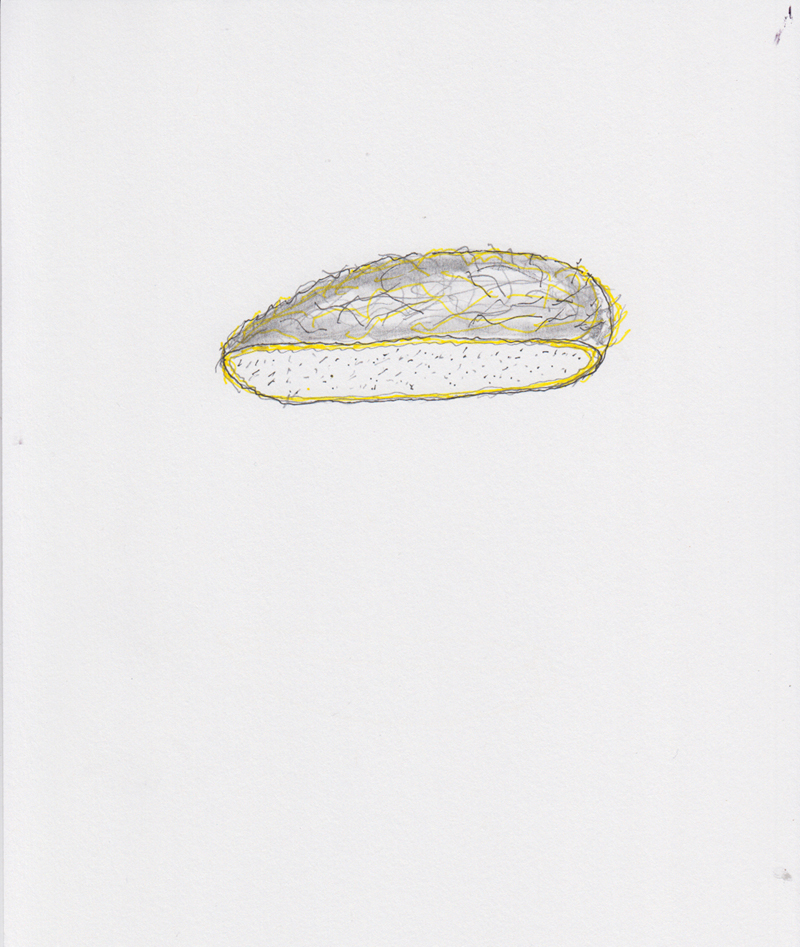
The building of the Cocoon.
Picture, our Cat spider hanging upside down from her web. Her first job is to weave a silken disk as a baseplate.
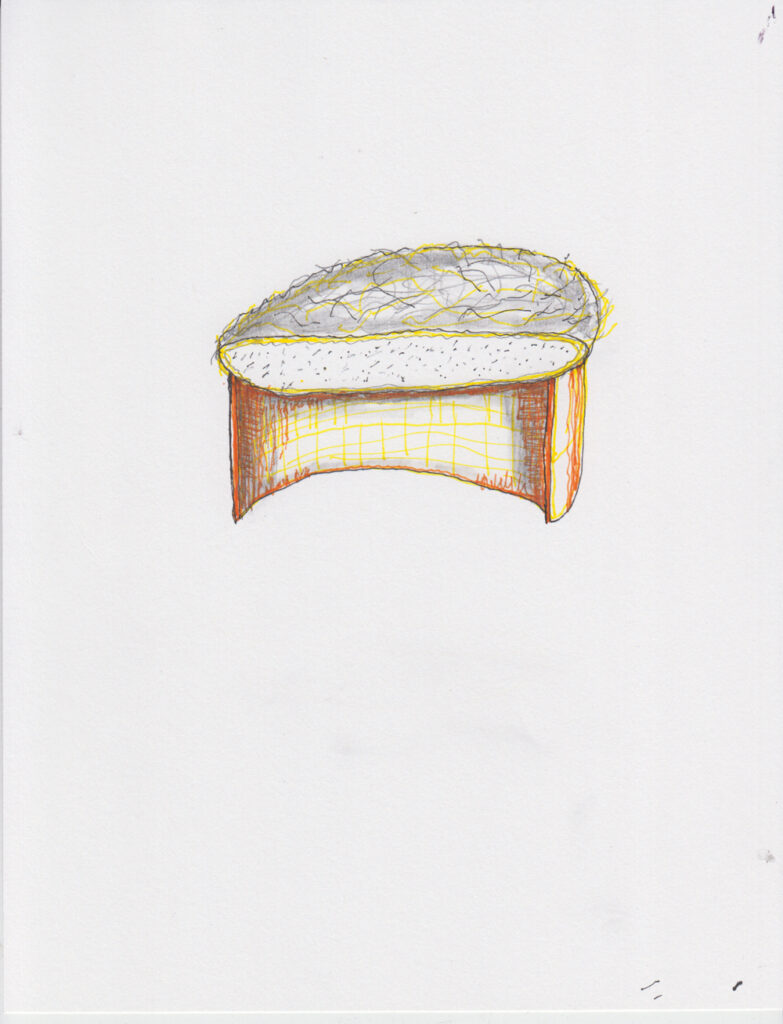
Then she builds a circular wall beneath the baseplate, made-up of flocculent, curly silk. This is accomplished by using her third pair of legs, turning the structure as she applies the silk.
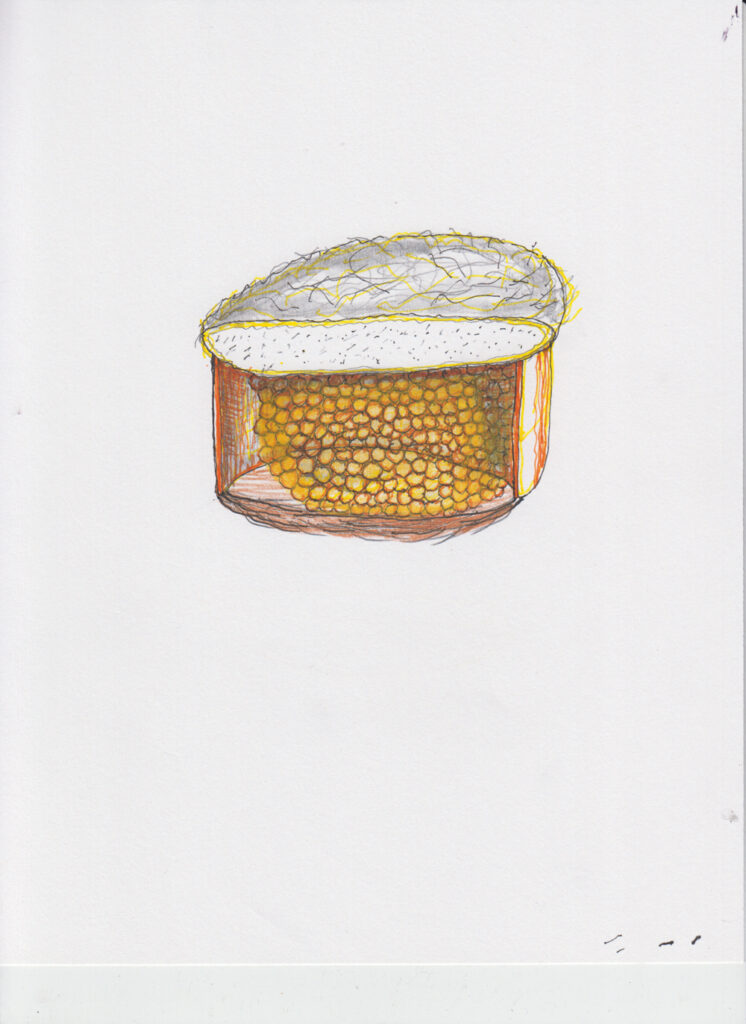
Adding the egg mass.
Still, on her back, she will fill the everted cup with eggs. This you may think defies gravity, but the fluid associated with the egg-laying process has dried out, bounding the eggs in a tight ball. Finally spinning a silken ‘floor’ to seal the eggs in, away from the elements.

The completed cocoon.
The whole egg sac is now thickly covered with golden silk. In some species a molting chamber is added below the egg mass, here the emerging spiderlings will spend many days molting and hardening their new skin.
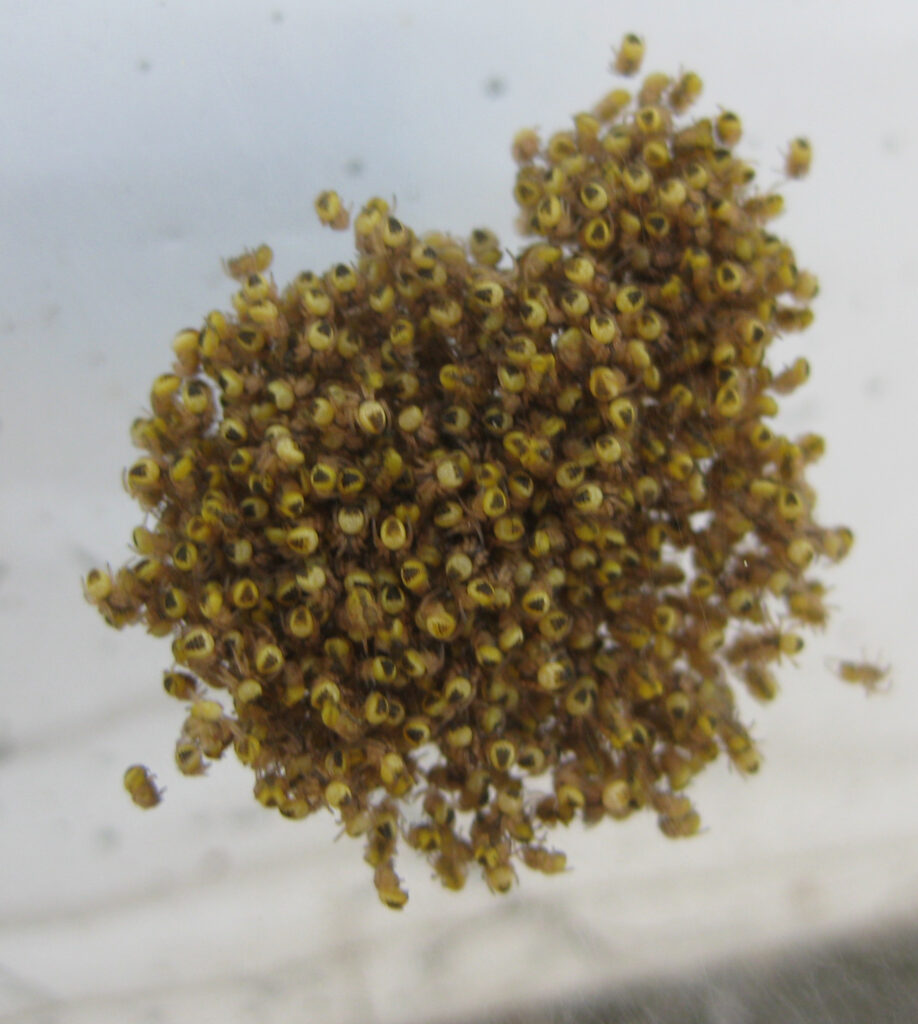
Having finished her work of providing for her offspring, she will crawl away and will die!


Conclusion.
The Cat Spider is an annual creature living out its life span in just five to six months. The female outlives the male by some three months, at which time she feeds continuously. It is not surprising that she takes great pains to protect her offspring in surviving the harsh winter to come.
For more details.
Spider Egg Sac: 10 Facts You Should Know (& Identification Chart) (thepetenthusiast.com)
Question. How does a single cell egg develop into a multicellular complex creature such as a spider?
Visit Part 7. Spider embryonic development. (Coming soon).
Happy reading JohnH.
